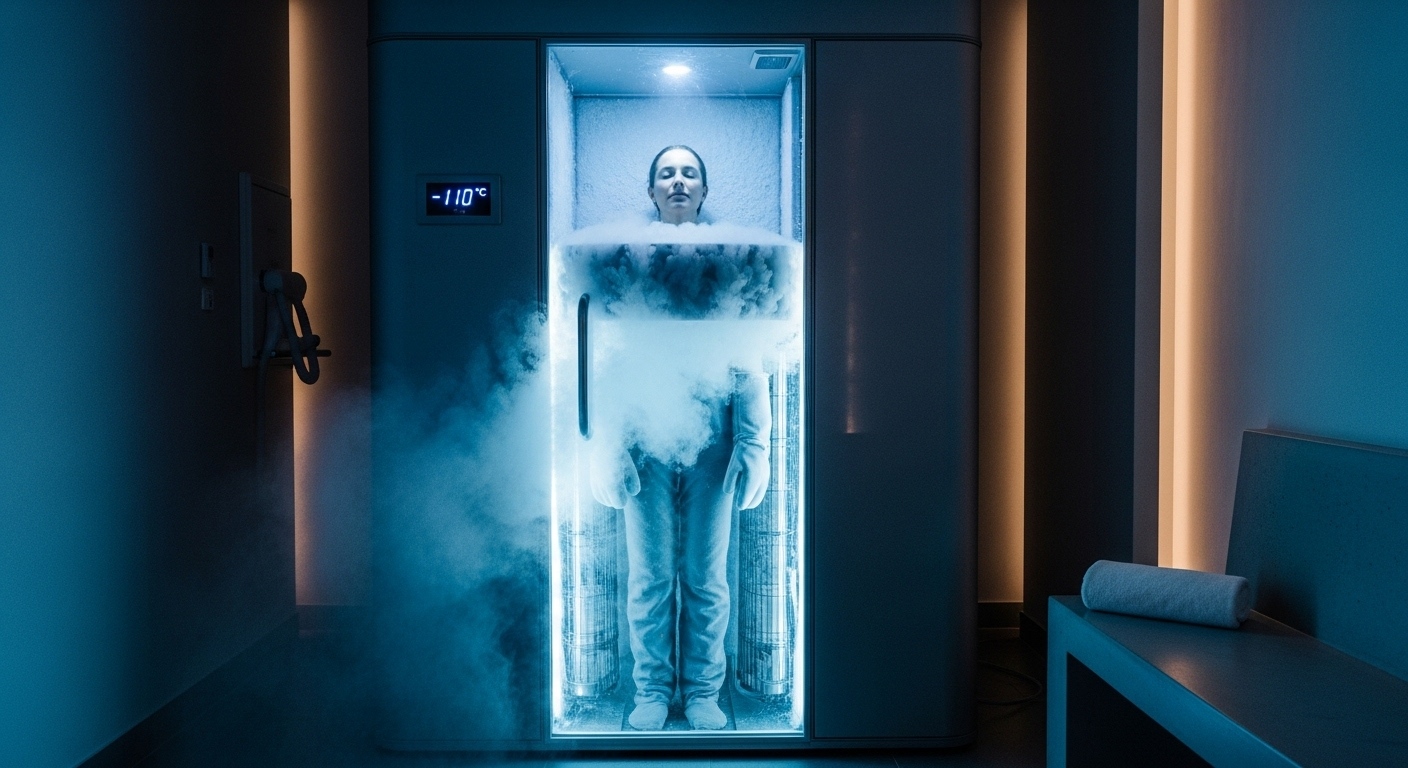Cryotherapy: The Cold Truth Behind the Wellness Craze
In a world where wellness trends come and go faster than you can say "detox," cryotherapy has emerged as a persistent and intriguing contender. This ultra-cold treatment, once reserved for elite athletes and medical patients, has found its way into mainstream beauty and fitness circles. But what exactly is cryotherapy, and does it live up to the hype? As we dive into the icy depths of this chilling phenomenon, we'll explore its origins, examine its purported benefits, and separate fact from fiction in the frozen landscape of wellness innovation. From whole-body chambers to targeted treatments, cryotherapy promises a range of benefits that sound almost too good to be true. Let's unpack the science, scrutinize the claims, and discover whether this big chill is really worth the goosebumps.

In a typical WBC session, individuals are exposed to temperatures as low as -200°F (-128°C) for two to four minutes. The body’s reaction to this extreme cold is what proponents claim leads to various health benefits. As the skin’s surface temperature rapidly drops, blood vessels constrict, redirecting blood flow to vital organs. Once out of the chamber, as the body warms, this blood rushes back to the extremities, potentially carrying anti-inflammatory proteins and endorphins.
The Cold Hard Facts: Claimed Benefits and Scientific Evidence
Cryotherapy enthusiasts tout a wide array of benefits, from reduced inflammation and pain relief to improved skin appearance and accelerated weight loss. But what does the science say? Let’s break down some of the most common claims:
-
Pain and Inflammation Reduction: Some studies have shown that cryotherapy can help reduce muscle soreness and inflammation after intense exercise. However, the evidence is mixed, and more research is needed to determine long-term effects.
-
Mood Enhancement: The release of endorphins following cryotherapy sessions may contribute to improved mood and reduced symptoms of anxiety and depression. While anecdotal evidence is strong, controlled studies are limited.
-
Skin Health: Proponents claim that cryotherapy can boost collagen production and improve skin elasticity. While some studies suggest potential benefits for certain skin conditions, comprehensive research on cosmetic effects is lacking.
-
Weight Loss: The theory is that extreme cold forces the body to work harder to stay warm, burning calories in the process. However, evidence for significant weight loss effects is largely anecdotal and not well-supported by scientific studies.
-
Athletic Performance: Some athletes swear by cryotherapy for faster recovery and improved performance. While there’s evidence for short-term benefits in muscle recovery, long-term performance enhancements are not well-established.
Diving into the Deep Freeze: Types of Cryotherapy Treatments
Cryotherapy isn’t a one-size-fits-all treatment. Various methods have emerged, each targeting different aspects of health and wellness:
-
Whole-Body Cryotherapy (WBC): The most well-known form, involving full-body exposure in a specialized chamber.
-
Partial-Body Cryotherapy: Similar to WBC, but the head remains outside the chamber, which some find more comfortable.
-
Localized Cryotherapy: Targeted cold therapy applied to specific areas of the body, often used for pain management or skin treatments.
-
Cryofacials: A beauty treatment that applies cold vapors to the face, claiming to reduce puffiness, tighten pores, and boost collagen production.
-
Cryosurgery: A medical procedure using extreme cold to destroy abnormal tissue, such as warts or certain types of cancer cells.
Safety First: Risks and Precautions in the World of Cryotherapy
While cryotherapy is generally considered safe when performed under proper supervision, it’s not without risks. Potential side effects can include:
-
Skin burns or frostbite from improper exposure
-
Breathing difficulties, especially in enclosed chambers
-
Increased blood pressure due to blood vessel constriction
-
Claustrophobia or anxiety in whole-body chambers
Certain groups should avoid cryotherapy altogether, including pregnant women, individuals with severe hypertension or heart conditions, and those with cold sensitivities or Raynaud’s syndrome.
It’s crucial to choose reputable facilities with trained staff and to disclose any medical conditions before undergoing treatment. Always start with shorter sessions and gradually increase exposure time as tolerated.
The Future of Frost: Cryotherapy in the Wellness Landscape
As cryotherapy continues to gain popularity, its role in the wellness industry is evolving. Some trends to watch include:
-
Integration with other therapies: Combining cryotherapy with massage, physiotherapy, or even virtual reality for enhanced experiences.
-
Personalized protocols: Tailoring cryotherapy treatments to individual needs and goals using advanced biometric monitoring.
-
Home cryotherapy devices: The development of safer, more accessible at-home options for localized treatments.
-
Cryotherapy in mental health: Exploring the potential benefits for conditions like anxiety and depression.
-
Environmental considerations: As awareness of energy consumption grows, expect to see more eco-friendly cryotherapy solutions.
While the jury is still out on many of cryotherapy’s claimed benefits, its popularity shows no signs of cooling off. As with any wellness trend, it’s essential to approach cryotherapy with a balanced perspective, weighing potential benefits against risks and always consulting with healthcare professionals before diving into the deep freeze. Whether cryotherapy proves to be a revolutionary wellness tool or just another passing fad, its impact on the beauty and fitness landscape is undeniably chilling – in more ways than one.





